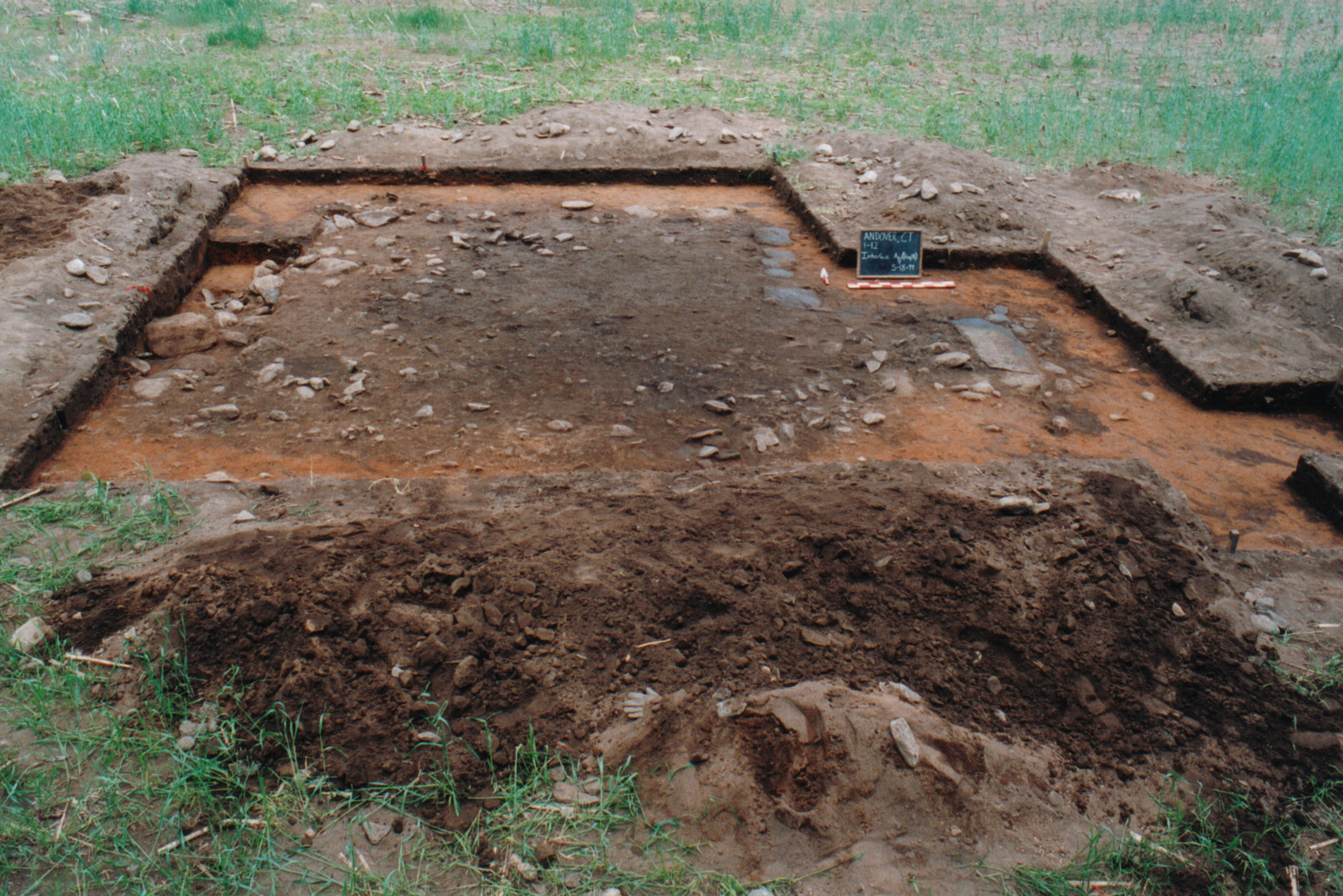
Another view of the top of the south cellar feature exposed below the plowzone. The black soil is the cellar fill and the reddish soil is the natural subsoil. The camera is facing north. Click image to enlarge.
Photographs of the site:
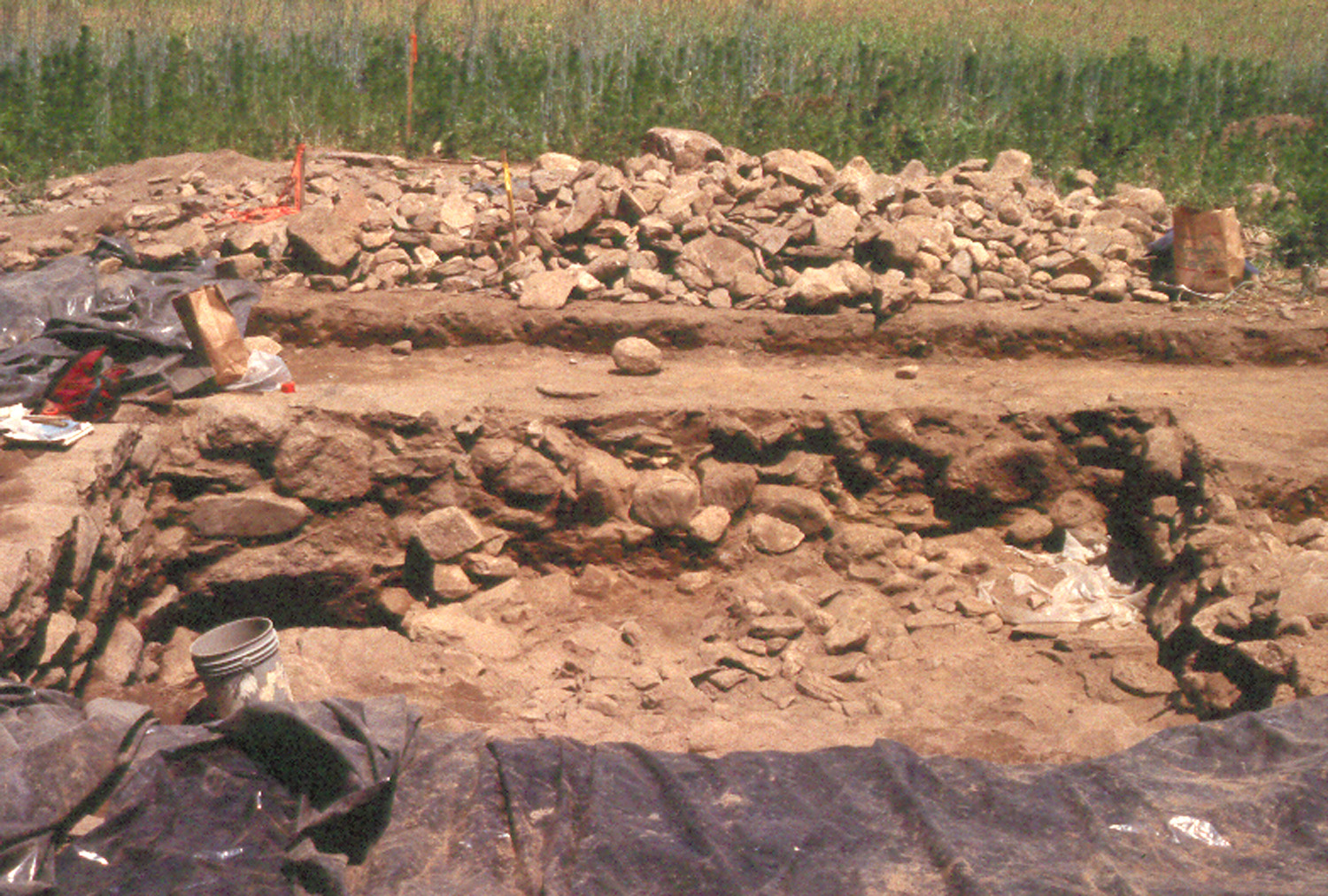
|
The south cellar after being excavated about halfway down. The stone pile in the background includes some of the stones removed from inside of the cellar during excavation. Click image to enlarge. |
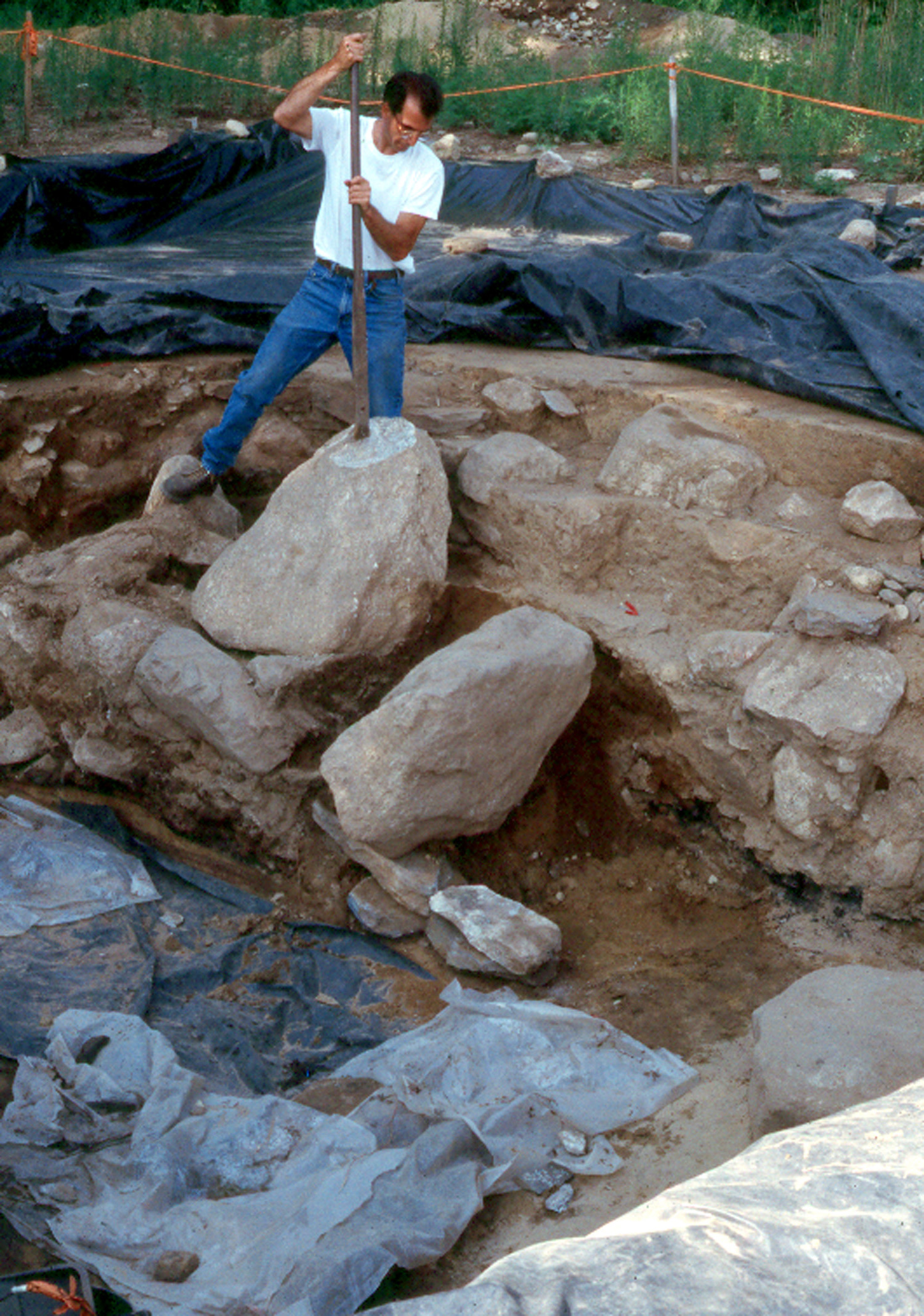
|
An archaeologist moving boulders that had been used to fill the south cellar after the house burned. |
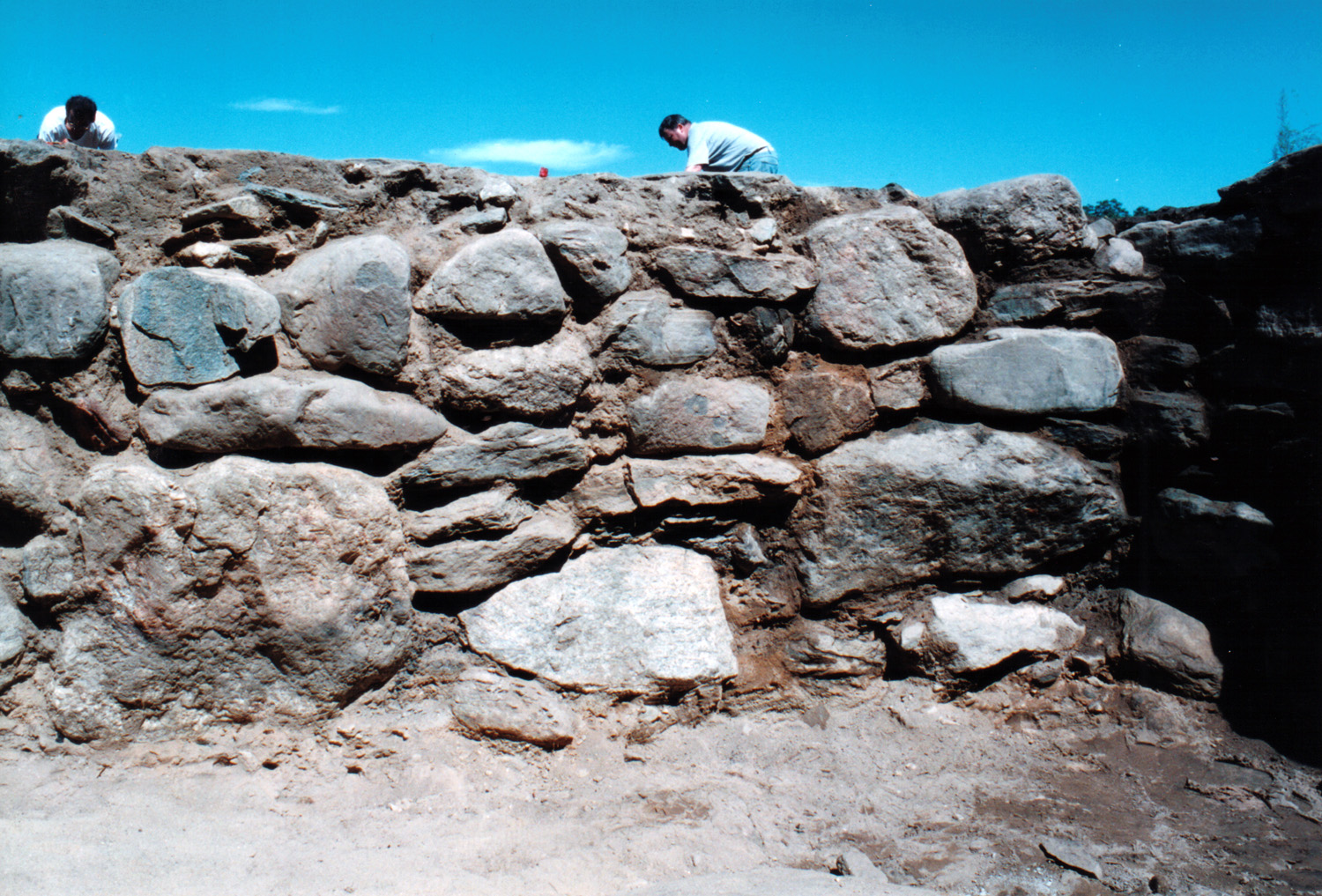
|
A close-up of the south cellar wall. Click image to enlarge. |

|
Fire-blackened and degraded stones from the fireplace that had been tossed into the south cellar hole to fill it. Click image to enlarge. |
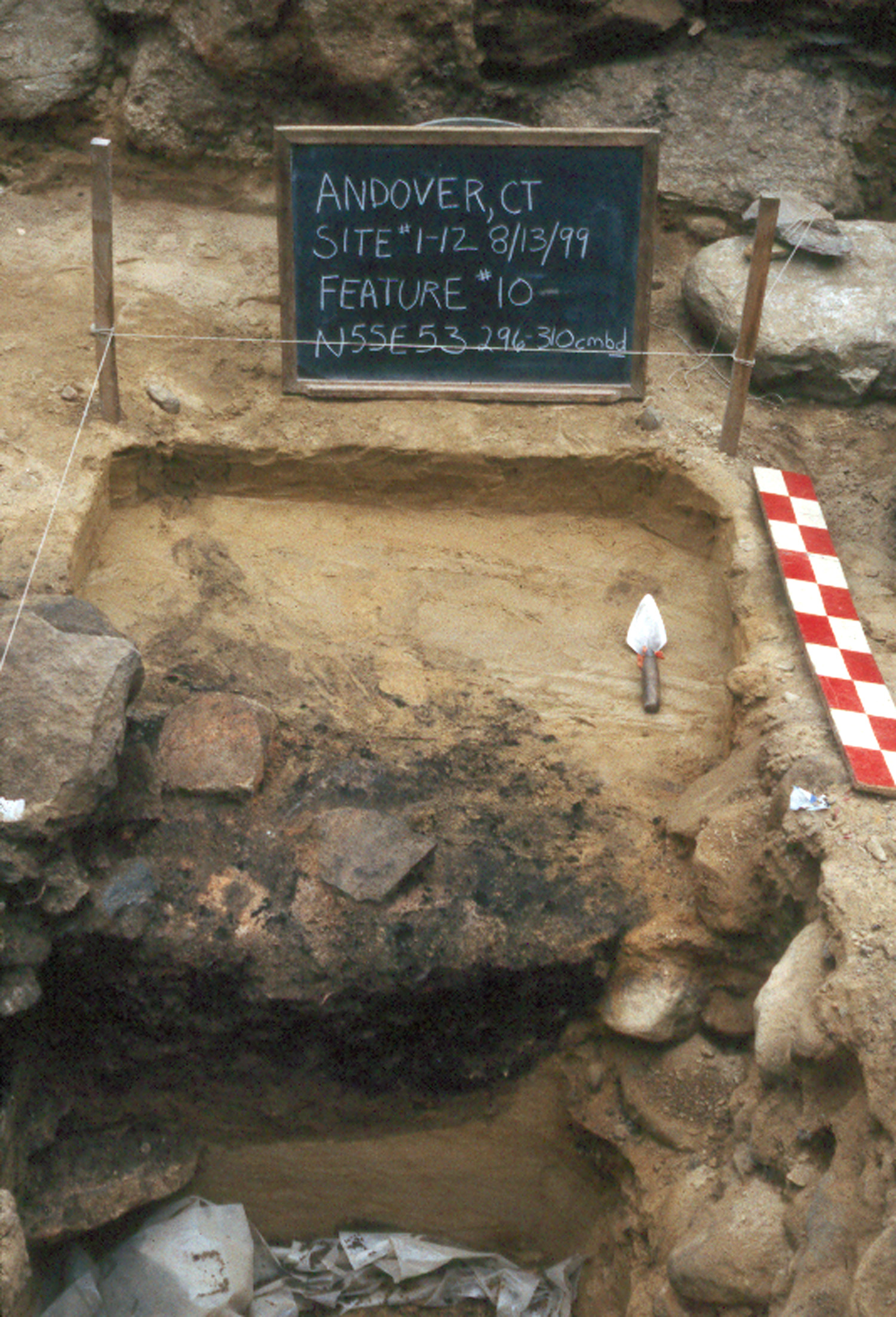
|
One of the sauce pits in the cellar floor was filled with charred and burned debris from the house fire. The pit was evidently open when the house burned down. Click image to enlarge. |

|
Charred boards and burned artifacts on the floor of the cellar. The white sherds are pieces of the white salt-glazed stoneware tea set. Click image to enlarge. |

|
A close-up view of the bulkhead entrance to the south cellar, showing the skillful stonework that went into making the sides and steps. Click image to enlarge. |
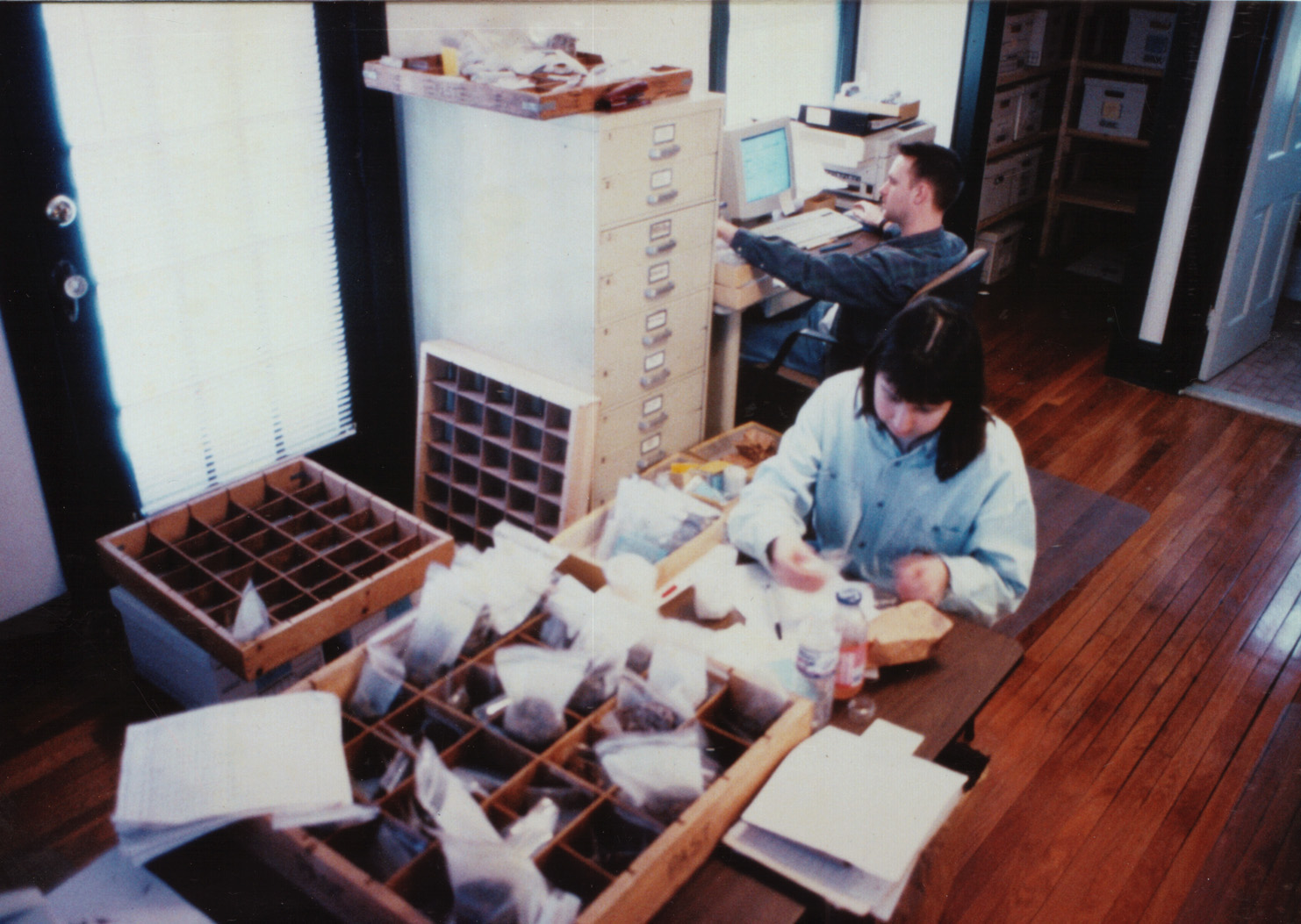
|
Archaeologists cataloging artifacts in the lab. Click image to enlarge. |
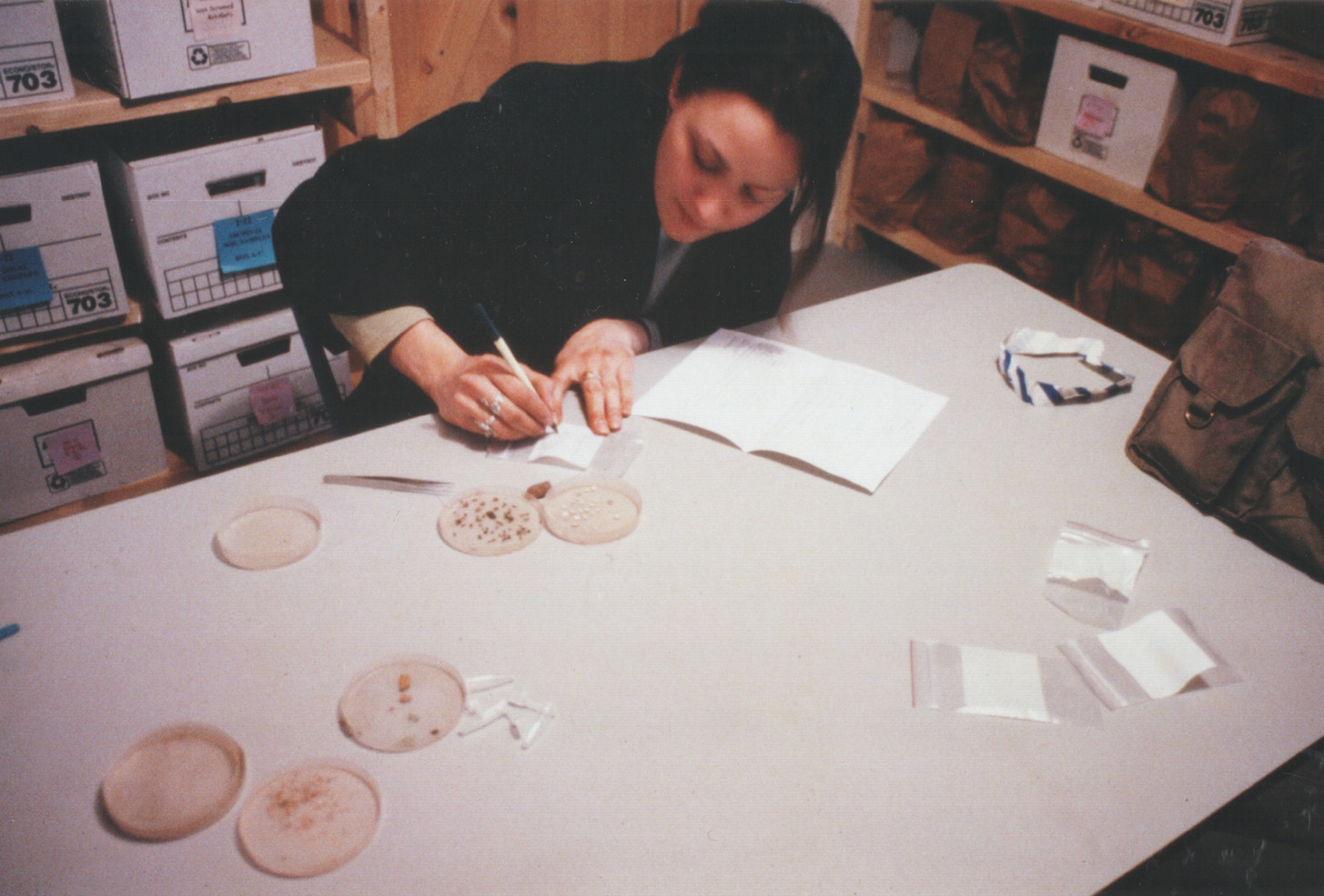
|
Archaeologist sorting small artifacts in the lab. Click image to enlarge. |
Artifact photographs:

|
A small cross-mended earthenware bowl that burned in the fire and fell to the bottom of the south cellar. It stands 2 inches tall and is 4 ½ inches in diameter. Click image to enlarge. |
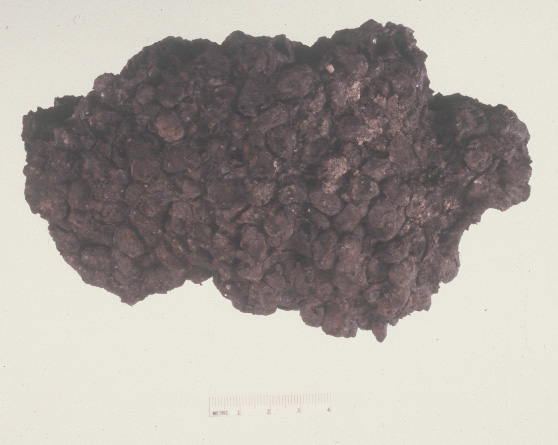
|
A large chunk of carbonized corn or maize found in the bottom of the south cellar. Part of the food stores that were lost when the house burned down. Click image to enlarge. |
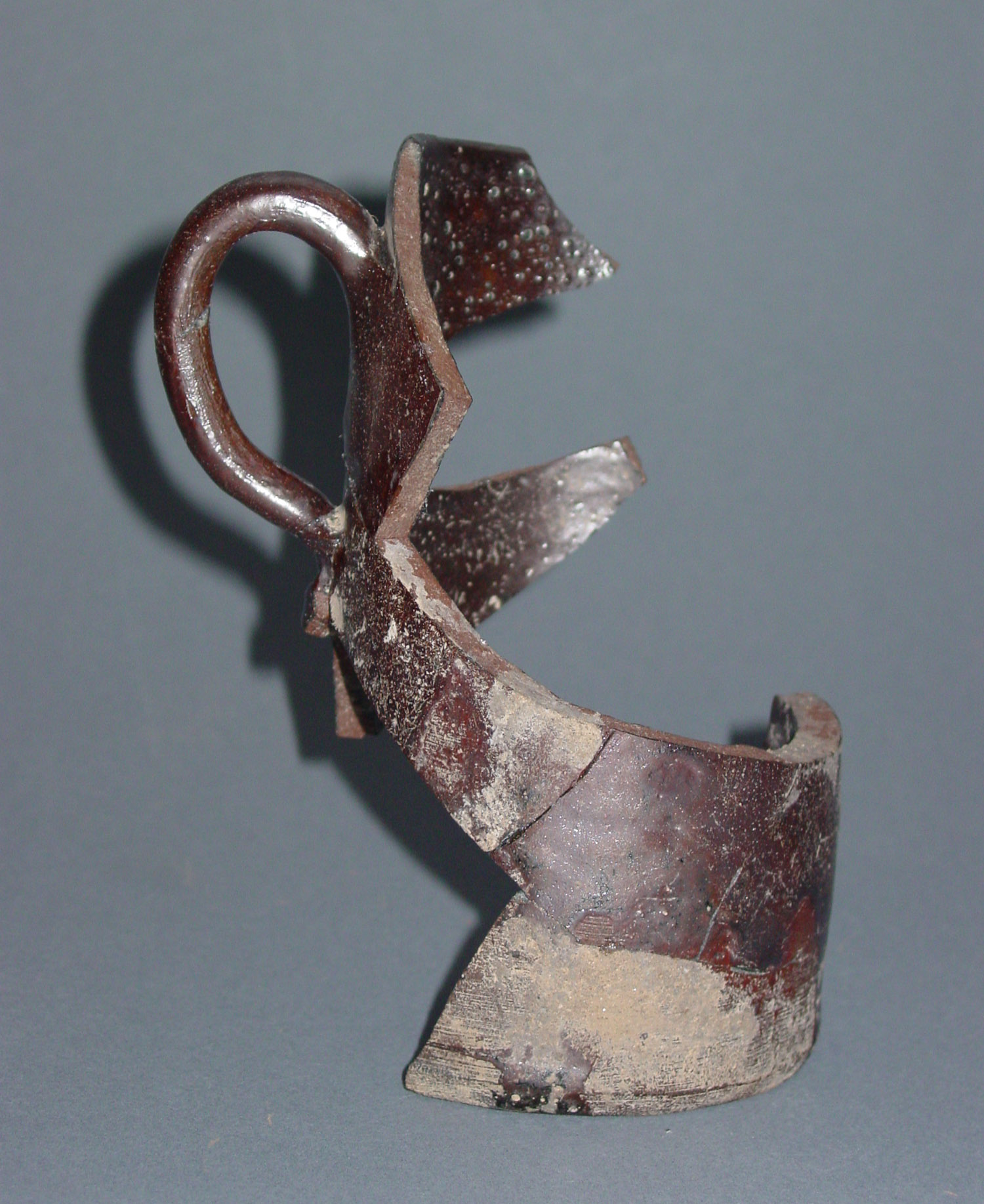
|
A cross-mended tankard. It stands 6 ¼ inches tall and has a 3 ½ inch rim diameter. Click image to enlarge. |

|
The cross-mended white salt-glazed stoneware tea set, including a tea pot, four tea bowls (cups) and saucers and a scratch-blue creamer. Click image to enlarge. |
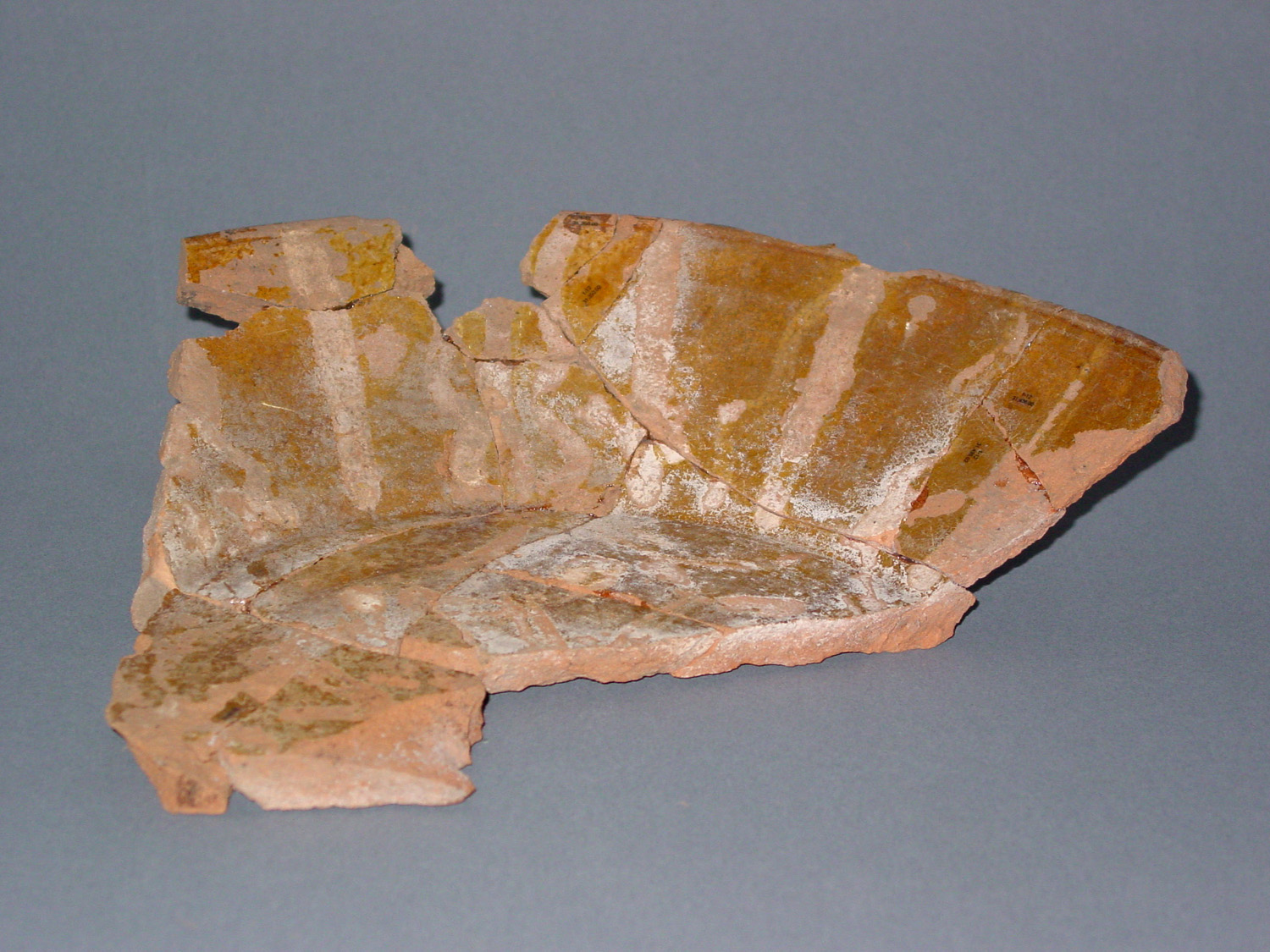
|
A cross-mended slip-decorated red earthenware baking dish showing top and bottom, with distinctive black scorch marks. Click image to enlarge. |
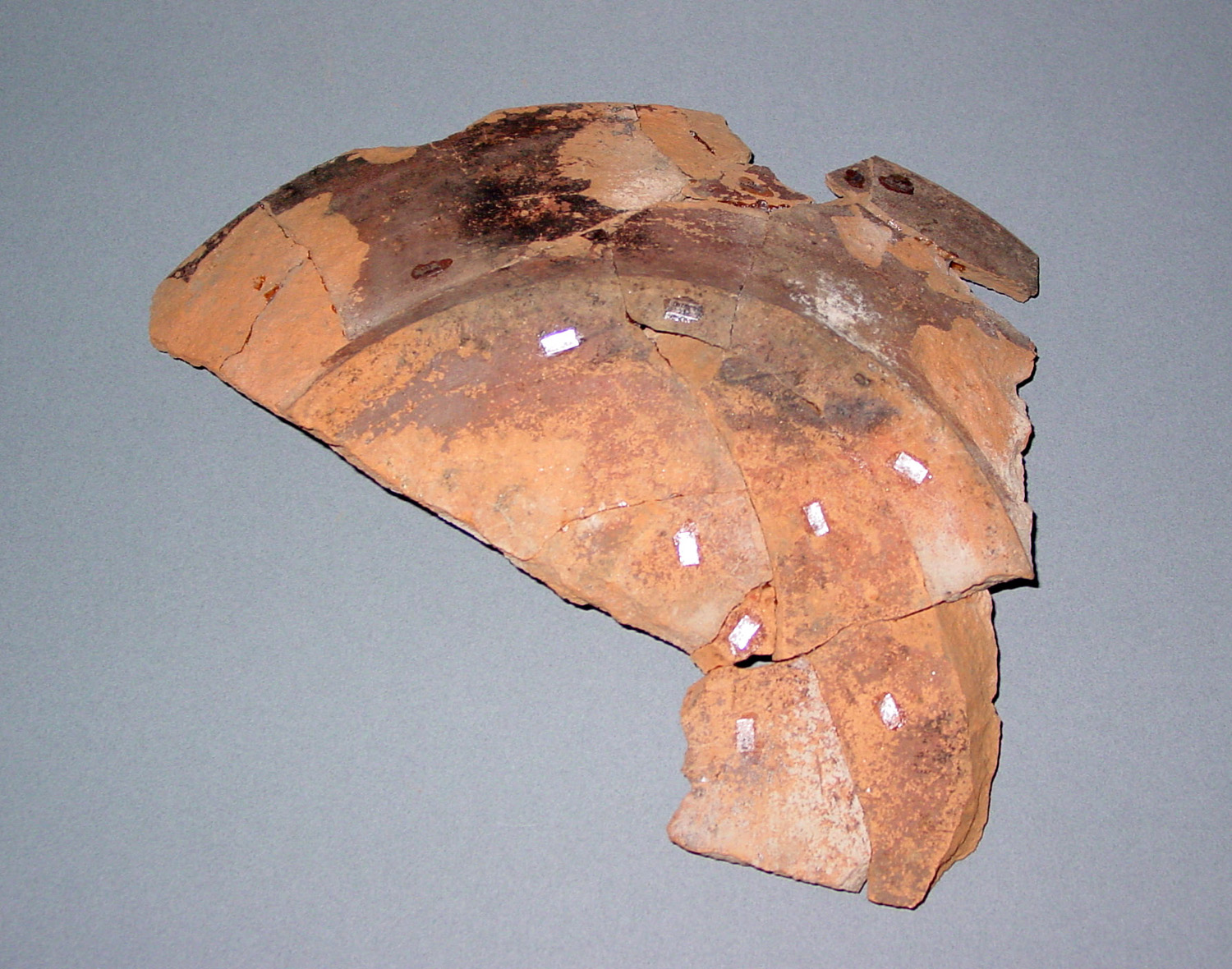
|
The bottom of the above dish showing black scorch marks from baking. Click image to enlarge. |
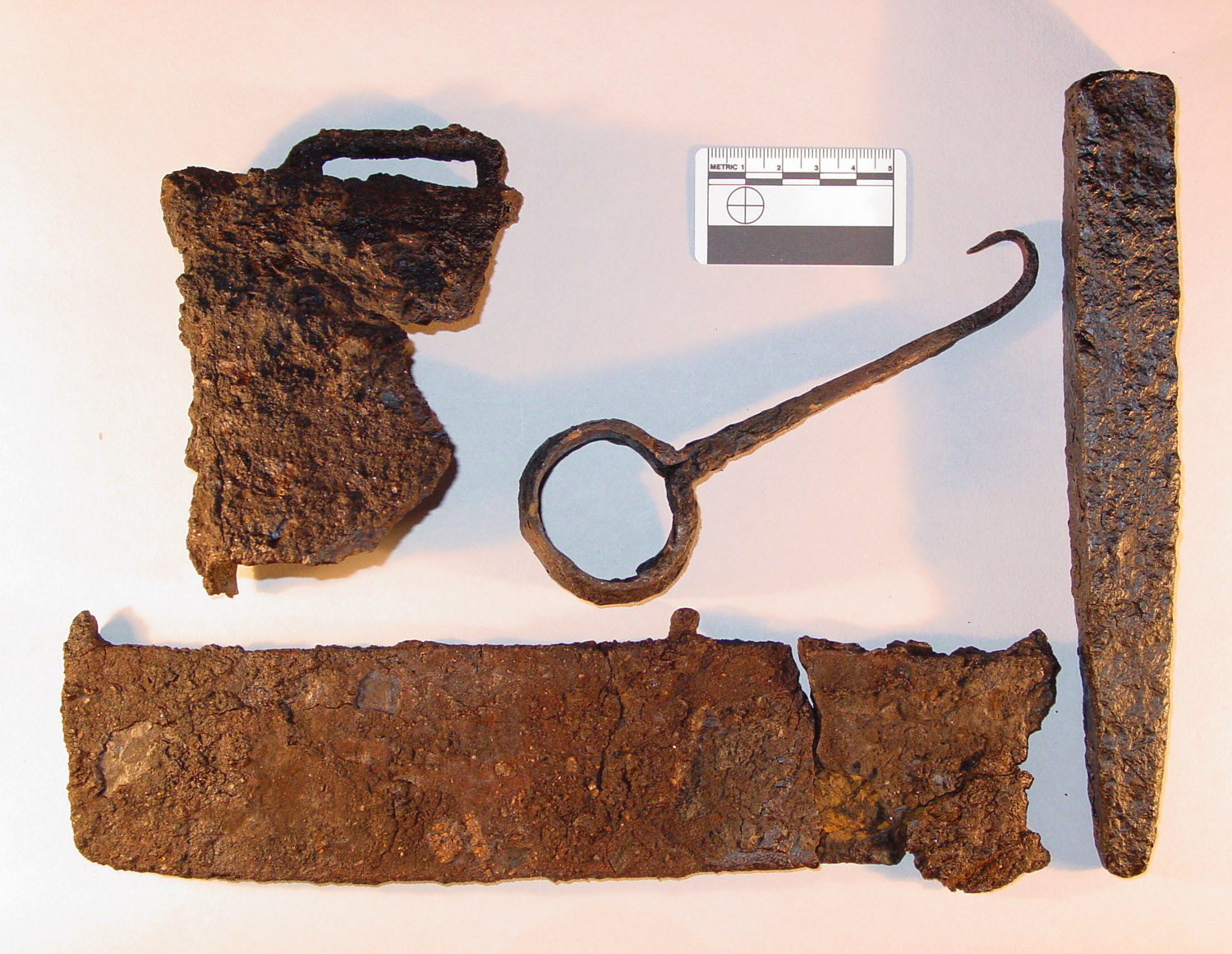
|
Farming implements: a livestock bell, a handle or grip from a scythe, a large harrow spike and the blade to a wood shovel. Click image to enlarge. |
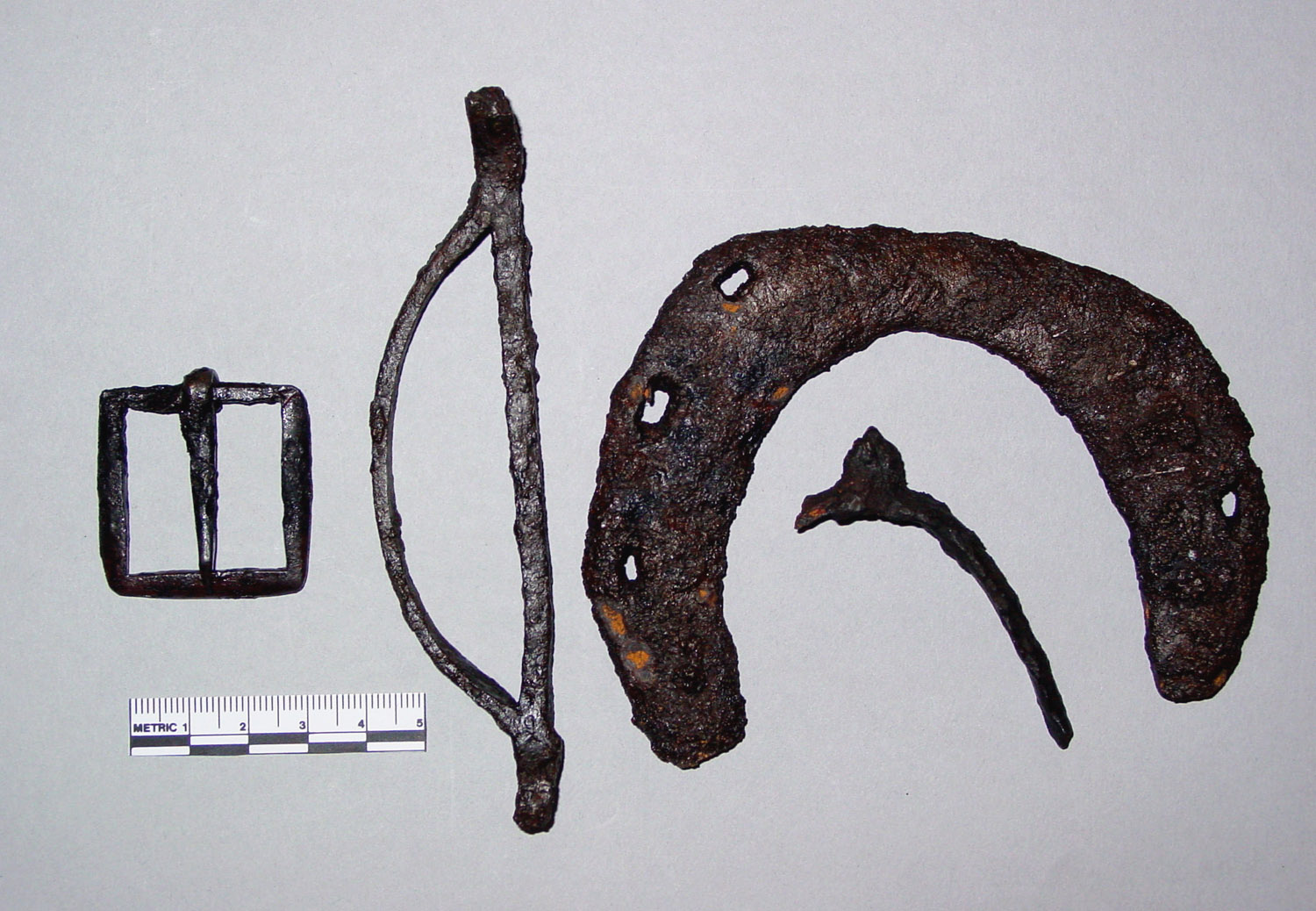
|
Horse tack: a 1-inch square strap or harness buckle, a fragment from a stirrup, a horseshoe and part of a stirrup. Click image to enlarge. |
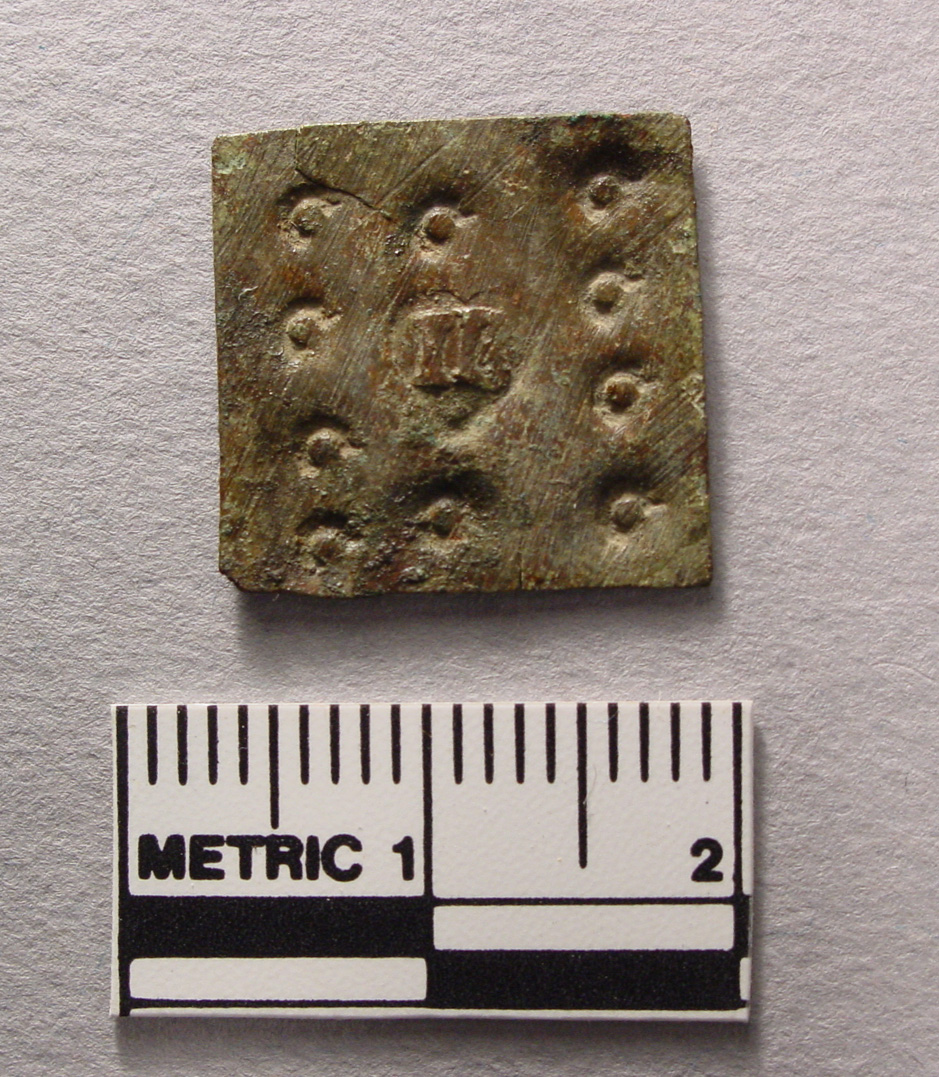
|
Close-up of a possible mourning token with the letters “IB” in a heart stamped onto it, possibly standing for Latin in brevis, that is, life is but short. Click image to enlarge. |
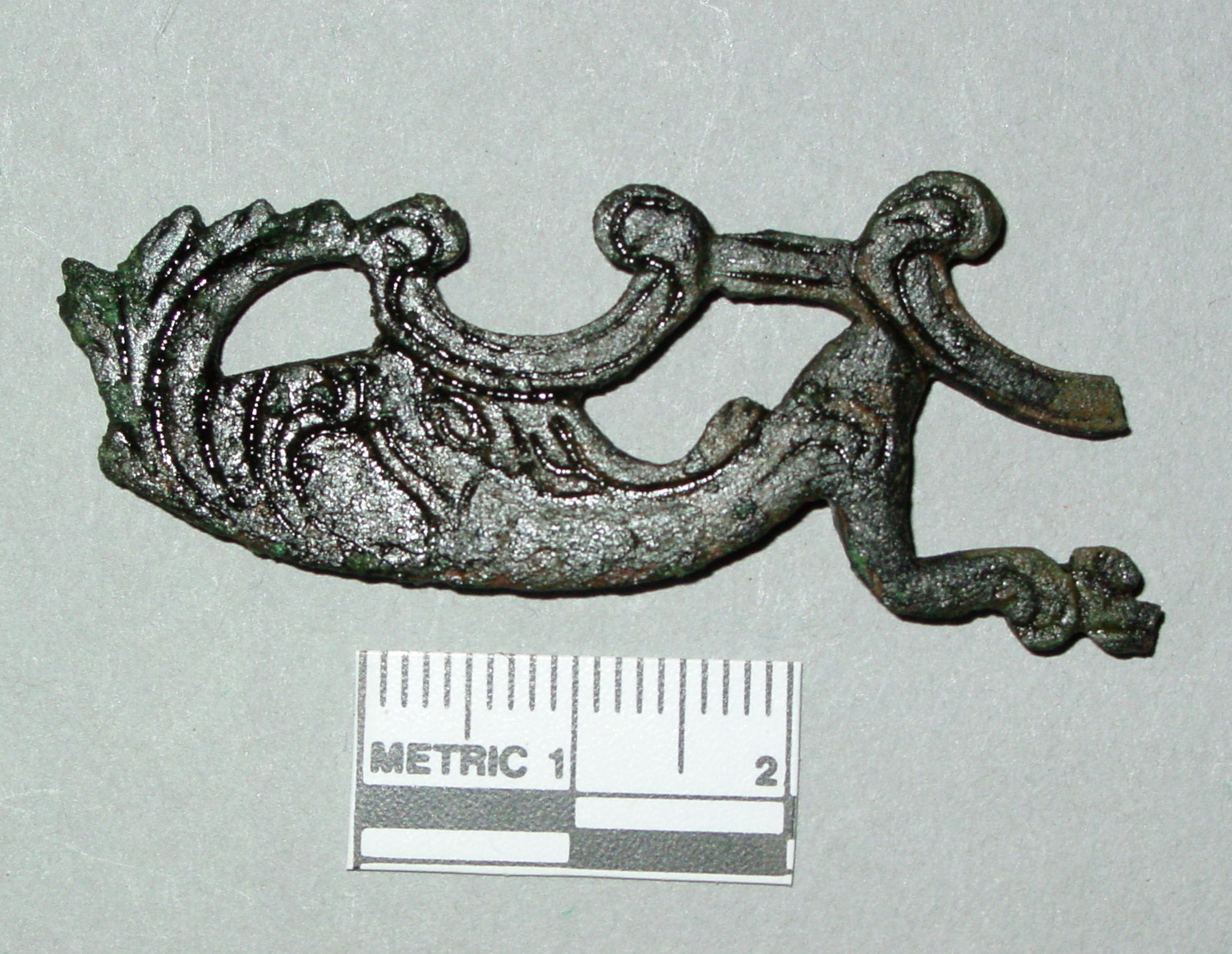
|
Close-up of a brass sideplate to a musket or fowling gun. At the center is dragon motif facing to the left. Click image to enlarge. |